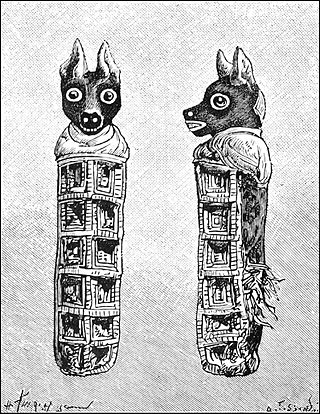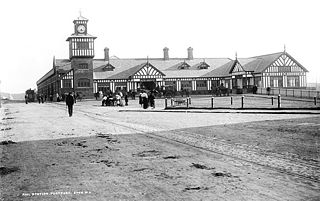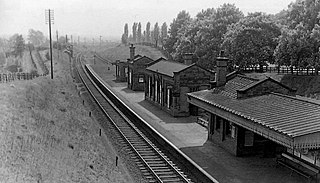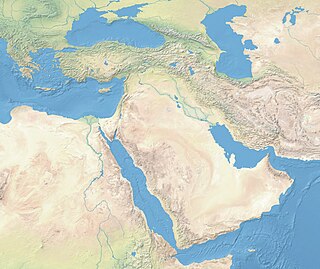
Zooarchaeology or archaeozoology merges the disciplines of zoology and archaeology, focusing on the analysis of animal remains within archaeological sites. This field, managed by specialists known as zooarchaeologists or faunal analysts, examines remnants such as bones, shells, hair, chitin, scales, hides, and proteins, such as DNA, to derive insights into historical human-animal interactions and environmental conditions. While bones and shells tend to be relatively more preserved in archaeological contexts, the survival of faunal remains is generally infrequent. The degradation or fragmentation of faunal remains presents challenges in the accurate analysis and interpretation of data.
The muscular system is an organ system consisting of skeletal, smooth, and cardiac muscle. It permits movement of the body, maintains posture, and circulates blood throughout the body. The muscular systems in vertebrates are controlled through the nervous system although some muscles can be completely autonomous. Together with the skeletal system in the human, it forms the musculoskeletal system, which is responsible for the movement of the body.

Taphonomy is the study of how organisms decay and become fossilized or preserved in the paleontological record. The term taphonomy was introduced to paleontology in 1940 by Soviet scientist Ivan Efremov to describe the study of the transition of remains, parts, or products of organisms from the biosphere to the lithosphere.

Palaeozoology, also spelled as Paleozoology, is the branch of paleontology, paleobiology, or zoology dealing with the recovery and identification of multicellular animal remains from geological contexts, and the use of these fossils in the reconstruction of prehistoric environments and ancient ecosystems.

Virgin CrossCountry was a train operating company in the United Kingdom that operated the InterCity CrossCountry passenger franchise from January 1997 until November 2007. Along with the InterCity West Coast franchise held by a separate legal entity, the company traded under the Virgin Trains brand.

Interstate 255 (I-255) is a bypass route of I-55 in Greater St. Louis. Along with I-270, it forms a loop around the central portion of the bi-state metro area; a majority of I-255 is located on the Illinois half. It shares its southern terminus with I-270 at the junction with I-55; I-270 and I-255 go to the west and east, respectively. U.S. Route 50 (US 50) joins I-255 at Lemay Ferry Road. It crosses the Mississippi River on the Jefferson Barracks Bridge, enters Illinois, and then turns northeast. There is a junction with I-64, where US 50 breaks off and goes east, and then further north there is a junction with I-55 again, I-70, and US 40, all of which are all cosigned together. The next junction is another one with I-270, which is the northern terminus of I-255. After that, the limited-access freeway continues on as Illinois Route 255 (IL 255). I-255 is 30.82 miles (49.60 km) in length.

The Giant's Causeway Tramway, operated by the Giant's Causeway, Portrush and Bush Valley Railway & Tramway Company Ltd, was a pioneering 3 ft narrow gauge electric railway operating between Portrush and the Giant's Causeway on the coast of County Antrim, Northern Ireland. The line, 9+1⁄4 miles (14.9 km) long, was hailed at its opening as "the first long electric tramway in the world". The Giant's Causeway and Bushmills Railway today operates diesel and steam tourist trains over part of the Tramway's former course.

The EMD GP18 is a 4-axle diesel-electric locomotive built by General Motors, Electro-Motive Division between December 1959 and November 1963. Power was provided by an 16-567D1 16-cylinder engine which generated 1,800 horsepower (1.34 MW). The GP18 replaced the GP9 in EMD's catalog. 350 examples of this locomotive model were built for American railroads, 40 units were built for Mexican railroads, 12 were built for export to a Brazilian railroad, 2 were exported to Peru, and 1 was exported to Saudi Arabia.

The EMD GP8 is a model of four-axle diesel locomotive rebuilt by Illinois Central's Paducah shops using a General Motors Electro-Motive Division (EMD) GP7, GMD GP7 or GP9 as a start. It is similar to the GP10 and GP11.

Stookey Township is a township located in St. Clair County, Illinois. It is an unincorporated part of Belleville, Illinois located just west of downtown Belleville, for that reason it is often referred to by locals as Belleville West. As of the 2010 census, its population was 10,007 and it contained 4,394 housing units.

Belgrave and Birstall railway station was a railway station opened by the Great Central Railway in 1899. It served the villages of Belgrave and Birstall in Leicestershire. It closed in 1963.
Hulton Abbey is a scheduled monument in the United Kingdom, a former monastery located in what is now Abbey Hulton, a suburb of Stoke-on-Trent. A daughter house of the Cistercian Combermere Abbey, the abbey was founded by Henry de Audley in the early 13th century. Throughout its life, the abbey was relatively small and poor, with one of the lowest incomes of all Staffordshire religious houses. The abbey was dissolved by Henry VIII in 1538, with its land and assets being sold.

Spratt's Complex is a housing development in Poplar, London. The former pet food factory was converted into approximately 150 live-work units beginning in 1985. This was one of the first such warehouse conversions in London. The complex is on Morris Road, lining Limehouse Cut canal, and is situated between the DLR stations of Langdon Park and Devons Road.

The archaeological site of Herxheim, located in the municipality of Herxheim in southwest Germany, was a ritual center and a mass grave formed by people of the Linear Pottery culture (LBK) culture in Neolithic Europe. The site is often compared to that of the Talheim Death Pit and Schletz-Asparn, but is quite different in nature. The site dates from between 5300 and 4950 BC. The site contained the scattered remains of more than 1000 individuals from different, in some cases faraway regions. Whether they were war captives or human sacrifices is unclear, but the evidence indicates that they were roasted and consumed.
Martin McEvoy is an English opera singer, producer, presenter and broadcaster. He has specialised in playing light baritone roles in opera and operetta especially those in the Gilbert & Sullivan repertoire. He broadcasts regularly on BBC Radio. McEvoy is the founder and artistic director of Crystal Clear Opera, London City Opera and Martin McEvoy Productions.

Krapina Neanderthal site, also known as Hušnjakovo Hill is a Paleolithic archaeological site located near Krapina, Croatia.
William Andrew Oddy, is a British conservator who was Keeper of Conservation at the British Museum. He is notable for his publications on artefact conservation and numismatics, and for the development of the Oddy test. In 1996 he was awarded the Forbes Prize "for outstanding work in the field of conservation" by the International Institute for Conservation, and gave the attendant Forbes Lecture that year in Copenhagen. He retired in 2002 and was appointed as an Officer of the Order of the British Empire the same year.
Mortuary archaeology is the study of human remains in their archaeological context. This is a known sub-field of bioarchaeology, which is a field that focuses on gathering important information based on the skeleton of an individual. Bioarchaeology stems from the practice of human osteology which is the anatomical study of skeletal remains. Mortuary archaeology, as well as the overarching field it resides in, aims to generate an understanding of disease, migration, health, nutrition, gender, status, and kinship among past populations. Ultimately, these topics help to produce a picture of the daily lives of past individuals. Mortuary archaeologists draw upon the humanities, as well as social and hard sciences to have a full understanding of the individual.
Positron emission tomography for bone imaging, as an in vivo tracer technique, allows the measurement of the regional concentration of radioactivity proportional to the image pixel values averaged over a region of interest (ROI) in bones. Positron emission tomography is a functional imaging technique that uses [18F]NaF radiotracer to visualise and quantify regional bone metabolism and blood flow. [18F]NaF has been used for imaging bones for the last 60 years. This article focuses on the pharmacokinetics of [18F]NaF in bones, and various semi-quantitative and quantitative methods for quantifying regional bone metabolism using [18F]NaF PET images.

Near Eastern bioarchaeology covers the study of human skeletal remains from archaeological sites in Cyprus, Egypt, Levantine coast, Jordan, Turkey, Iran, Saudi Arabia, Qatar, Kuwait, Bahrain, United Arab Emirates, Oman, and Yemen.
















